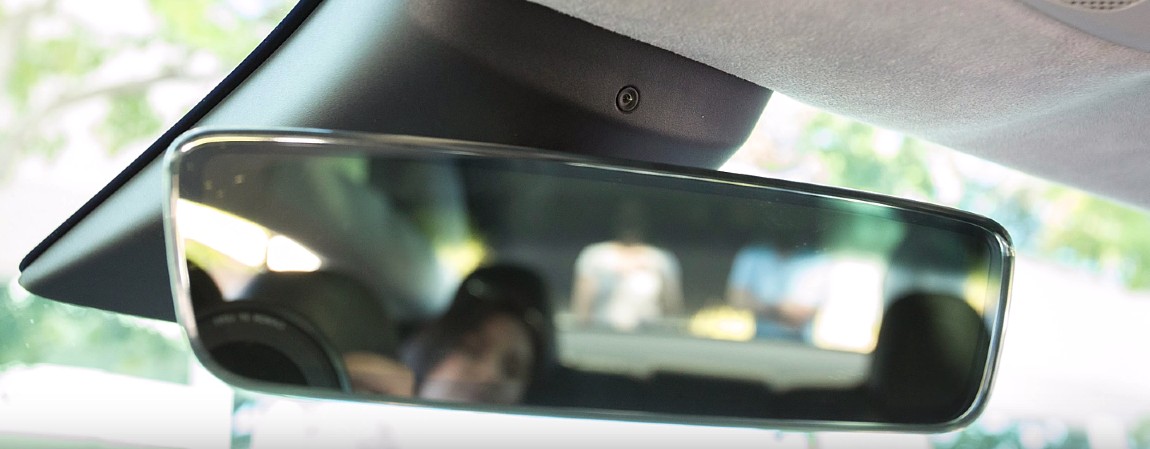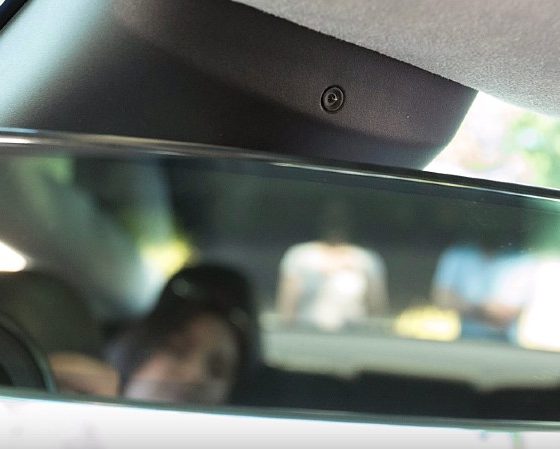Tesla has released a new statement concerning recent developments of security concerns with its China-built cars. Recently, Tesla’s all-electric vehicles underwent a security review from Chinese officials, who were concerned that the cameras on and inside of the vehicle could be used to transmit sensitive government information to the U.S. as relations between the two countries have been complicated.
Chinese Gov’t tells Military, Gov’t personnel not to drive Teslas on State-related property
In the initial article from the Wall Street Journal from mid-March, Chinese government officials raised privacy concerns regarding the eight external and single cabin cameras outfitted on Tesla vehicles. Government employees, workers for State-related contractors, and Military personnel were all told to refrain from navigating Tesla cars on sensitive properties. The cameras on a Tesla are used for several reasons. Still, several Chinese government interests believed that they could be utilized to collect sensitive information that the United States could use against China.
In response to the accusations, Tesla CEO Elon Musk responded by stating that its vehicles are not recording any information that the government could utilize because of legal issues. “There’s a very strong incentive for us to be very confidential with any information. If Tesla used cars to spy in China or anywhere, we will get shut down,” Musk said in an interview shortly after the WSJ article.
Tesla’s Company Response: Cameras aren’t active
Tesla has officially responded to the Chinese government’s concerns in posting on the Customer Support Weibo account it operates in China. The statement indicates that the cabin cameras are not activated outside of the North American market and that it is up to the driver to determine whether the camera needs to be active or stagnant.
The company went into more detail (via AutoHome China):
“Recently, there has been a discussion on the Internet about ‘Tesla monitors the owner through the camera in the car.’ In order to eliminate unnecessary misunderstandings, the following is specifically stated:
The vehicles used by Tesla users do not infringe on the privacy of users through the in-vehicle camera.
All Tesla user vehicles on the Chinese market have not turned on their in-vehicle cameras, nor are they involved in FSD Beta testing.
Tesla’s privacy protection policy complies with national laws and regulations. Like you, Tesla attaches great importance to the protection of user privacy. We are equipped with a network security system with the world’s leading security level to ensure user privacy protection. Thank you again for your attention to Tesla.”
The cabin camera was recently activated to monitor drivers who are a part of the FSD Beta program. The cabin camera is used to monitor whether the driver is paying attention to the road and its surroundings. If the vehicle’s cabin camera notices the driver is not attentive, it will revoke FSD Beta testing capabilities from that driver. It is a safety precaution to ensure the Beta testing sequence of Tesla’s Full Self-Driving systems goes smoothly, as an accident or mistake caused by an inattentive driver could send Tesla’s development of semi-autonomous driving functionalities back several years.
However, FSD Beta is only available to drivers in the United States at the current time, but it could make its way to Canada and other markets shortly. However, the Chinese market is not being used to test the FSD Beta, and there is no indication of when Tesla will roll out the functionality to other regions. Ultimately, it comes down to traffic and road rules being understood by Tesla’s self-driving software. “Very important to make sure this is done right,” Musk once said when talking about the suspended release of the FSD suite in other countries.

News
Tesla starts showing how FSD will change lives in Europe
Local officials tested the system on narrow country roads and were impressed by FSD’s smooth, human-like driving, with some calling the service a game-changer for everyday life in areas that are far from urban centers.

Tesla has launched Europe’s first public shuttle service using Full Self-Driving (Supervised) in the rural Eifelkreis Bitburg-Prüm region of Germany, demonstrating how the technology can restore independence and mobility for people who struggle with limited transport options.
Local officials tested the system on narrow country roads and were impressed by FSD’s smooth, human-like driving, with some calling the service a game-changer for everyday life in areas that are far from urban centers.
Officials see real impact on rural residents
Arzfeld Mayor Johannes Kuhl and District Administrator Andreas Kruppert personally tested the Tesla shuttle service. This allowed them to see just how well FSD navigated winding lanes and rural roads confidently. Kruppert said, “Autonomous driving sounds like science fiction to many, but we simply see here that it works totally well in rural regions too.” Kuhl, for his part, also noted that FSD “feels like a very experienced driver.”
The pilot complements the area’s “Citizen Bus” program, which provides on-demand rides for elderly residents who can no longer drive themselves. Tesla Europe shared a video of a demonstration of the service, highlighting how FSD gives people their freedom back, even in places where public transport is not as prevalent.
What the Ministry for Economic Affairs and Transport says
Rhineland-Palatinate’s Minister Daniela Schmitt supported the project, praising the collaboration that made this “first of its kind in Europe” possible. As per the ministry, the rural rollout for the service shows FSD’s potential beyond major cities, and it delivers tangible benefits like grocery runs, doctor visits, and social connections for isolated residents.
“Reliable and flexible mobility is especially vital in rural areas. With the launch of a shuttle service using self-driving vehicles (FSD supervised) by Tesla in the Eifelkreis Bitburg-Prüm, an innovative pilot project is now getting underway that complements local community bus services. It is the first project of its kind in Europe.
“The result is a real gain for rural mobility: greater accessibility, more flexibility and tangible benefits for everyday life. A strong signal for innovation, cooperation and future-oriented mobility beyond urban centers,” the ministry wrote in a LinkedIn post.
News
Tesla China quietly posts Robotaxi-related job listing
Tesla China is currently seeking a Low Voltage Electrical Engineer to work on circuit board design for the company’s autonomous vehicles.

Tesla has posted a new job listing in Shanghai explicitly tied to its Robotaxi program, fueling speculation that the company is preparing to launch its dedicated autonomous ride-hailing service in China.
As noted in the listing, Tesla China is currently seeking a Low Voltage Electrical Engineer to work on circuit board design for the company’s autonomous vehicles.
Robotaxi-specific role
The listing, which was shared on social media platform X by industry watcher @tslaming, suggested that Tesla China is looking to fill the role urgently. The job listing itself specifically mentions that the person hired for the role will be working on the Low Voltage Hardware team, which would design the circuit boards that would serve as the nervous system of the Robotaxi.
Key tasks for the role, as indicated in the job listing, include collaboration with PCB layout, firmware, mechanical, program management, and validation teams, among other responsibilities. The role is based in Shanghai.
China Robotaxi launch
China represents a massive potential market for robotaxis, with its dense urban centers and supportive policies in select cities. Tesla has limited permission to roll out FSD in the country, though despite this, its vehicles have been hailed as among the best in the market when it comes to autonomous features. So far, at least, it appears that China supports Tesla’s FSD and Robotaxi rollout.
This was hinted at in November, when Tesla brought the Cybercab to the 8th China International Import Expo (CIIE) in Shanghai, marking the first time that the autonomous two-seater was brought to the Asia-Pacific region. The vehicle, despite not having a release date in China, received a significant amount of interest among the event’s attendees.
Elon Musk
Elon Musk and Tesla AI Director share insights after empty driver seat Robotaxi rides
The executives’ unoccupied tests hint at the rapid progress of Tesla’s unsupervised Robotaxi efforts.

Tesla CEO Elon Musk and AI Director Ashok Elluswamy celebrated Christmas Eve by sharing personal experiences with Robotaxi vehicles that had no safety monitor or occupant in the driver’s seat. Musk described the system’s “perfect driving” around Austin, while Elluswamy posted video from the back seat, calling it “an amazing experience.”
The executives’ unoccupied tests hint at the rapid progress of Tesla’s unsupervised Robotaxi efforts.
Elon and Ashok’s firsthand Robotaxi insights
Prior to Musk and the Tesla AI Director’s posts, sightings of unmanned Teslas navigating public roads were widely shared on social media. One such vehicle was spotted in Austin, Texas, which Elon Musk acknowleged by stating that “Testing is underway with no occupants in the car.”
Based on his Christmas Eve post, Musk seemed to have tested an unmanned Tesla himself. “A Tesla with no safety monitor in the car and me sitting in the passenger seat took me all around Austin on Sunday with perfect driving,” Musk wrote in his post.
Elluswamy responded with a 2-minute video showing himself in the rear of an unmanned Tesla. The video featured the vehicle’s empty front seats, as well as its smooth handling through real-world traffic. He captioned his video with the words, “It’s an amazing experience!”
Towards Unsupervised operations
During an xAI Hackathon earlier this month, Elon Musk mentioned that Tesla owed be removing Safety Monitors from its Robotaxis in Austin in just three weeks. “Unsupervised is pretty much solved at this point. So there will be Tesla Robotaxis operating in Austin with no one in them. Not even anyone in the passenger seat in about three weeks,” he said. Musk echoed similar estimates at the 2025 Annual Shareholder Meeting and the Q3 2025 earnings call.
Considering the insights that were posted Musk and Elluswamy, it does appear that Tesla is working hard towards operating its Robotaxis with no safety monitors. This is quite impressive considering that the service was launched just earlier this year.










